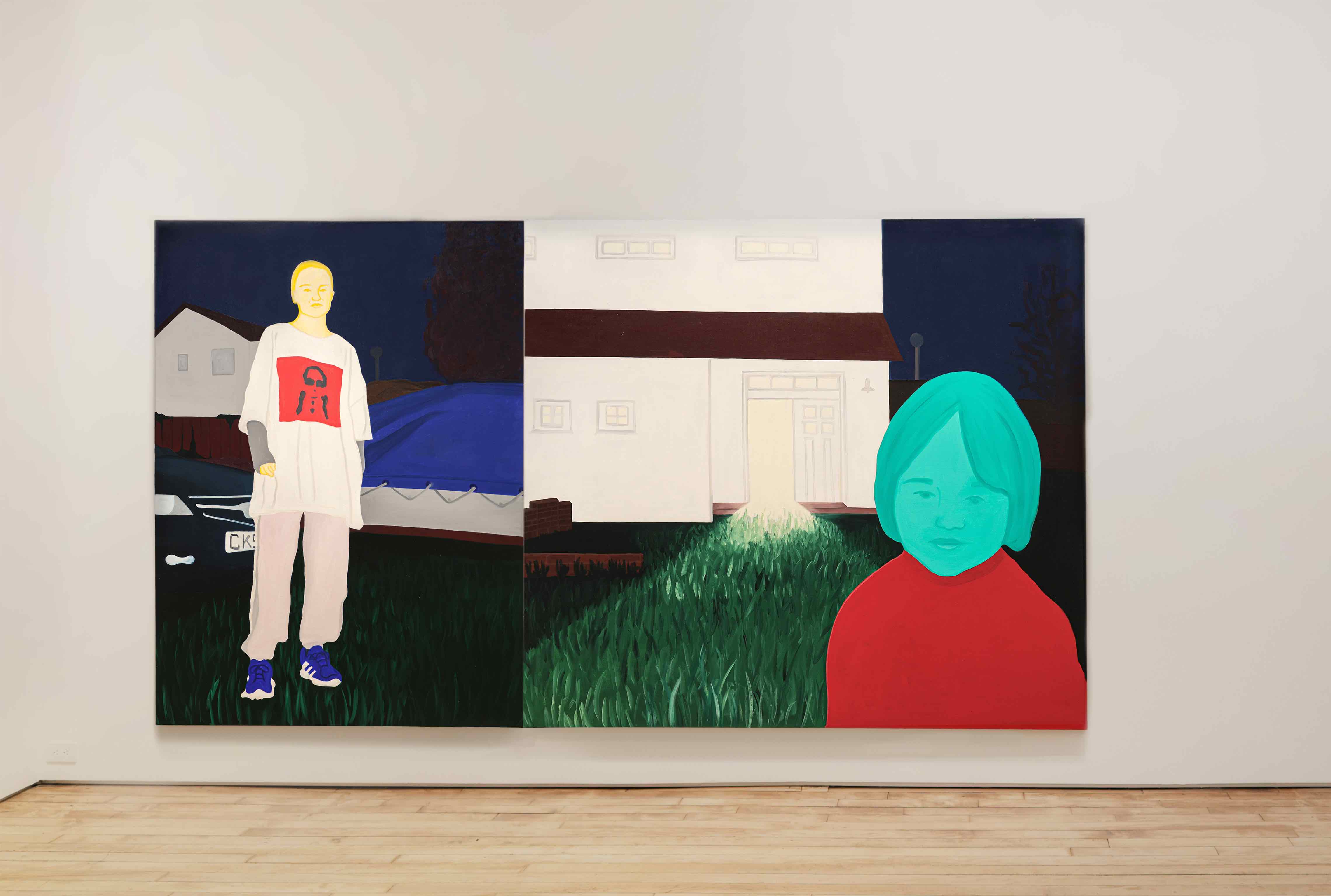 Anastazie Anderson,Annie 1997, Annie 2023(2024).Oil on linen.143 3⁄4 x 78 3/4 in
Anastazie Anderson,Annie 1997, Annie 2023(2024).Oil on linen.143 3⁄4 x 78 3/4 inIt is hard to overlook the impact of digital photography on the younger generation of painters, especially when dealing with the familiar themes of memory and coming-of-age. Amongst this generation, the most notable in the photographic turn of paintings call the names of Issy Wood, Anna Weyant and Chloe Wise, as well as many stylish others in the New York scene--Rae Klein, Ella Rose Flood, Leon Xu, which veer more into the “sentimental”, rather than the “hyper-” denoting a notion of virality and connectivity(as in hyperlinks), as Kate Brown coined in her Arnet article. Brown defined the term “hyper-sentimentalism” as the market trend of “scene-y figurative portraiture combine[-d with] an awareness about access to a scene with a tenderness for it.”
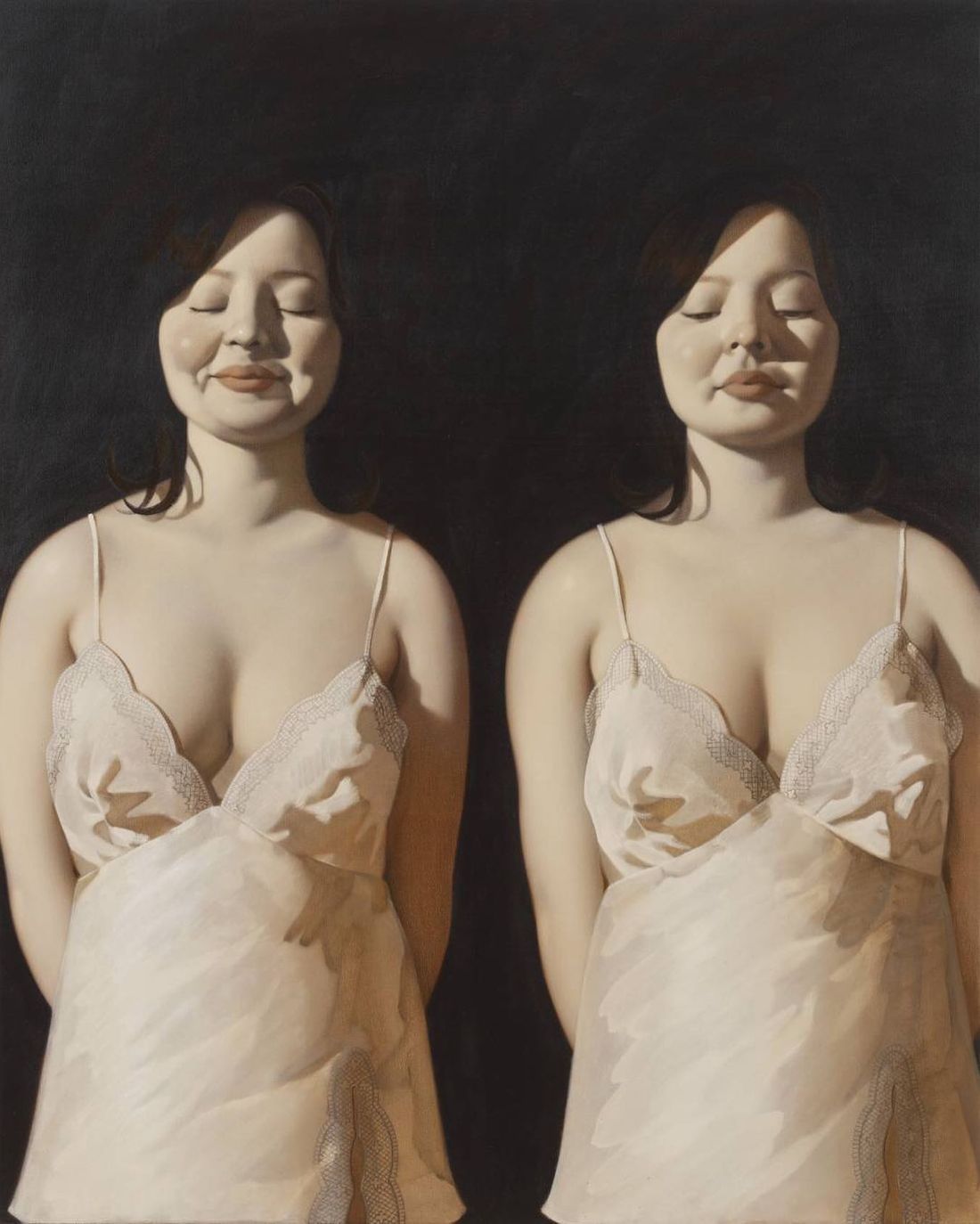
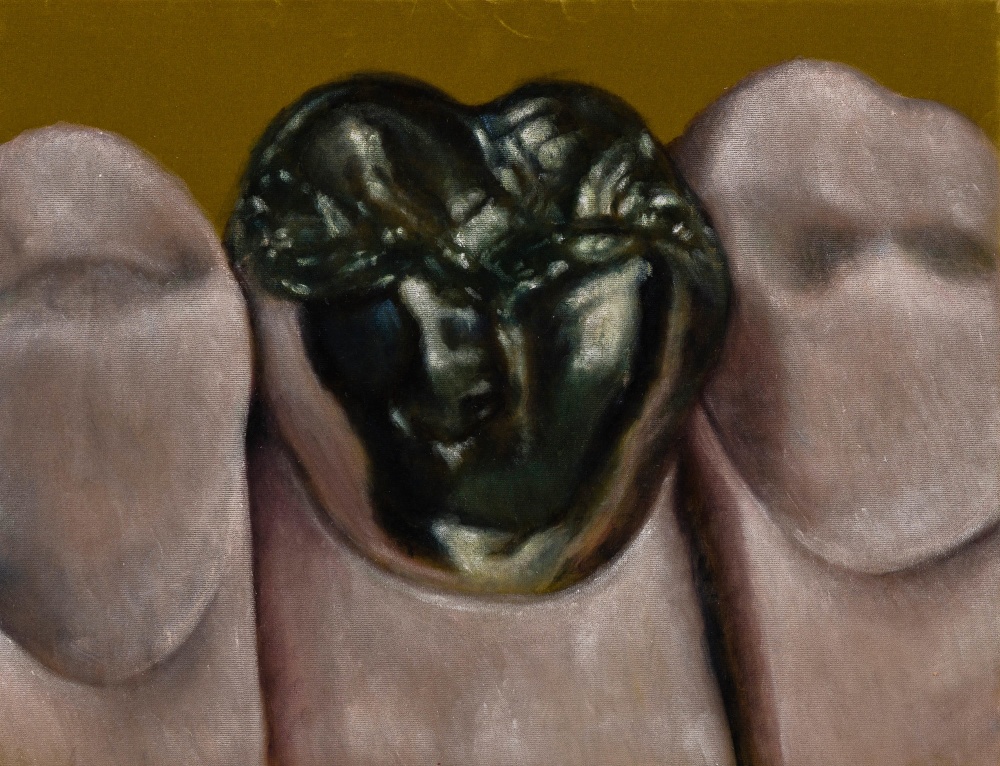
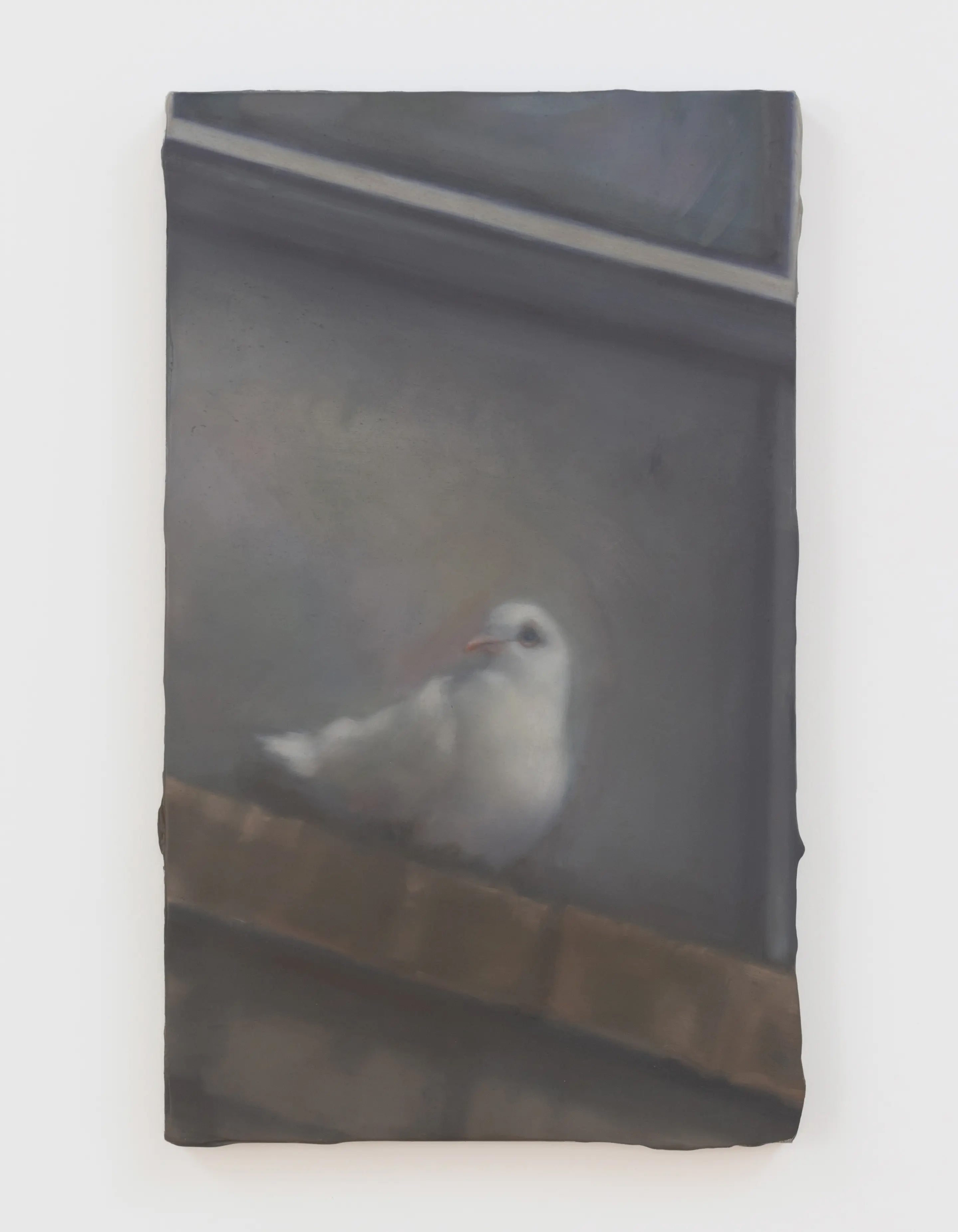
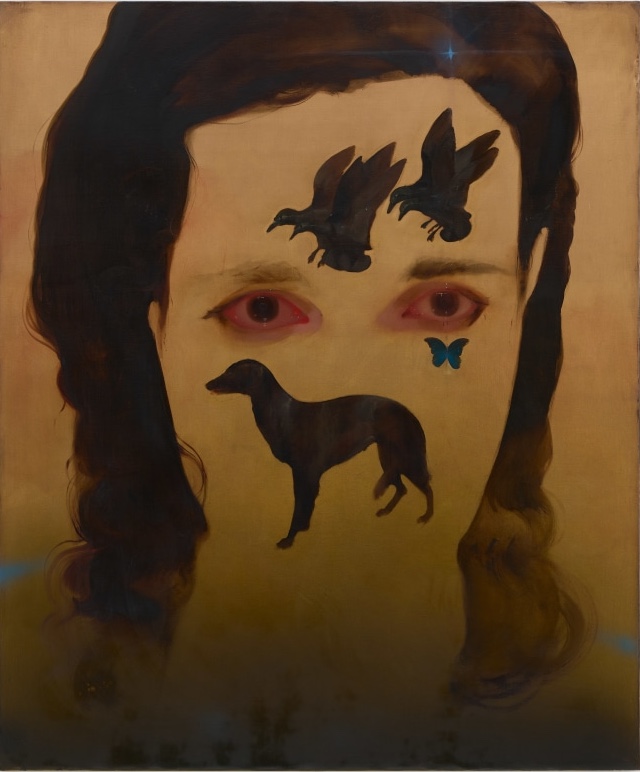

Aside from the self-referential subject matter of the New York art scene, this stylized genre of portraiture is inbred of the internet, cliques and clouts, the ifykyk. The identifying traits include forms of romanticized melancholia and dramaticized anxiety, repackaged as a trying remedy for digital ennui--only to be fed into the closed loop to record-preserve-exhibit. Incessantly. It is a cyclical model of production and consumption: this strategy of figuration is inscribed with an inexhaustible seriality for the painter, markers of a consistent market and accumulative growth.
In many cases, I would argue that these paintings are mere painterly effects of digitally manipulated imageries: magical surrealist juxtapositions in Klein, microscopic disquietude in Flood, obscured apertures in Xu. Photography and photoshop underline much of the visual complexity on these canvases, while paintings are subjected to techonologies of perception that instrumentalize, if not casturate vision, or the scope thereof.

Anastazie Anderson presents no obvious difference from the fashionable crowd in that she also works with photos and photoshops when developing her image. However, instead of tending to an aesthetized ambiguity, her paintings (all 2024) shown in Yve Yang this past April, remain resolutely flat, particular and enigmatic--obstructing the tease of “access” with a disorientation of perception that does not contend with the illusionistic. It is what it is. As plain as ever, almost abrasively so.
Czech born, London based, Anastazie Anderson achieved her MFA from the Royal Academy of Art just last year. But the young painter’s determination and boldness are evident in her practice and the sheer scale of it. All her canvases are measured around her own height, a little over five feet. Despite its large scale, Anderson’s work keeps you at an arm’s length, relinquishing pictorial depth for an emotional distance.
The compositions are off-putting, fragmented internally. Most figures are in odd colors, over-exposed, in stark contrast with their background. This creates an inherent aberration to the figures with each of their embedded grounds, in a manner that differs from the total displacement and recontextualization in a collage. Rather, montage is the more accurate logic that describes Anderson’s practice. The tension is temporal rather than spatial. The seam is harder to pinpoint.



Colors are leveraged with their volume rather than value. In the triptych of Mother(1,2,3), the seated mothers are painted with a blinding yellow tint, against white chairs, in front of muted landscape in the back. The expressions are paled.
This dramatized misalignment between figure and ground cultivates a delicate withdrawal coded with a vulunerability. Anderson often works with family photographs and memories from childhood. In Ben, Jana, Martina, the faces of her parents are enlarged to the left, looking over to her sister, Martina at the right, drinking a can of soda in nonchalance. The contact is barred by a slanted white door in between, half open, or about to shut.
More curiously rendered is Sokolovna, where the middle-figures are imbued in cold teal, signaling a certain emotional distance wired in time, while the baby with a red hat intrudes the pensive viewers, as another tiny figure sits behind the table, looking away. There is a theatrics to the staging of each painting, creating psychological resonances in and out of the canvas. Thus the work comes off as extremely cerebral, soliciting the viewers in what feels like intense introspection of a personal moment, in which the subject appears removed, irretrivable, sinking into itself.
There is no fuzziness or hyper-realistic rendering to make up for lost time or sentiment--with every painting, the framing spatialization renavigates surface and depth. Anderson stages a tension in a dance of flatness and disproportion that is the antithesis to the apparatus of seeing predicated by the camera--namely the infinite encroachment for more definition, higher resolution and shortened distance. The combination of the large physical scale of the painting with its magnified perceptives ends up leaving you more astrayed than entranced. Instead of sublimation, Anderson opts for estrangement--a familiar kind--not as a denial of access, but exposing certain impossibilities that are closer to reality.
Fixated and off-focus, the flatness construes a sense of frailty of the inscribed moment in its very disquietude. Anderson brings the magic and audacity of Alex Katz to a new place, with her unique blend of personal history and psychological exploration through formal and tonal experimentation. In their fragmented coherence, these paintings retain a rare sense of composure and certainty, appearing as a conviction rather than a vision. Spending more time with them, you begin to realize that the formal abstraction is attributed to a factual deduction only to be written off as an abrasive affirmation of reality that is deprived of illusion. In their poetic resynthesis of moments past, instilled and ambivalent, complicted psyches are rendered in bold strokes and honesty. Everything feels still, as if nothing is fleeting, nor ever there at all.
--Hindley Wang, June 2024.